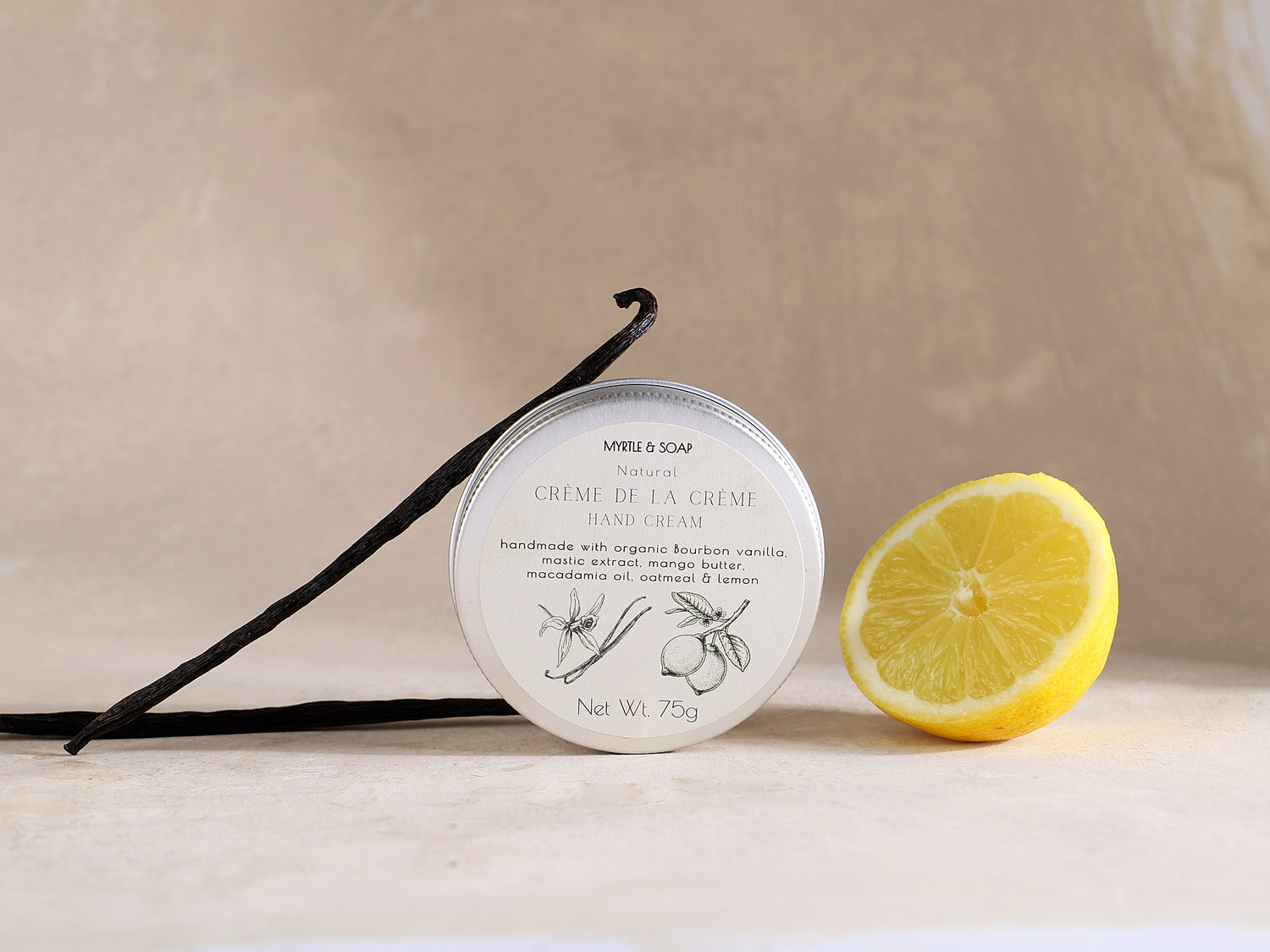All soap is made by combining oils and fats (fatty acids) with an alkali (base), which is either sodium hydroxide or potassium hydroxide. In the older times, they used to derive potassium hydroxide from wood ash for soap making. The reaction that occurs when combining the alkali and the fats is called saponification and it is this reaction that then turns the oils into soap.
When the saponification process is done, there is actually no remaining sodium hydroxide in the final product as all of it was used up to convert the oils into soap.
To make things even safer, artisan soap makers also tend to "superfat" their soaps. Superfatting is the process of adding a calculated excess of oil and butters than the sodium hydroxide can actually convert into soap. When all the sodium hydroxide is used up, there are still some unconverted oils remaining in the final soap bar, making it milder and more moisturizing to the skin than a typical supermarket soap bar.
This process in the only process to make soap. Any cleansing product that was not made by combining oils with a base is called a detergent.
As the definition of the word “soap” given by Merriam-webster dictionary depicts, soap is "a cleansing and emulsifying agent made usually by action of alkali on fat or fatty acids and consisting essentially of sodium or potassium salts of such acids".
There is nevertheless a way to disguise sodium or potassium hydroxide in the ingredients list of soap products. Let's assume for simplicity our soap is made of just two ingredients, olive oil and sodium hydroxide. There are two ways to write the ingredients list:
- Olive Oil, Sodium Hydroxide or
- Sodium Olivate
Sodium Olivate is another way of saying "saponified olive oil" and it is the salt of the fatty acids derived from olive oil. In other words, olive oil and sodium hydroxide give us sodium olivate, our saponified product.
Many companies prefer this form of presenting their soap ingredients. Here are some more examples with more of the common oils out there: Sodium Cocoate (reaction of coconut oil with sodium hydroxide), Sodium Palmate (reaction of palm oil with sodium hydroxide), Sodium Tallowate (reaction of beef fat with sodium hydroxide), Sodium Palm Kernelate (reaction of palm kernel oil with sodium hydroxide). If potassium hydroxide were to be used instead of sodium hydroxide then the ingredient list would look like Potassium Olivate, Potassium Cocoate etc.
At the end of the day, there is nothing wrong with one or the other way of presenting the ingredient list. It is a matter of preference. We find it easier to list all ingredients in their pre-saponified form and inform our customers about what each ingredient that goes into our soap is.

